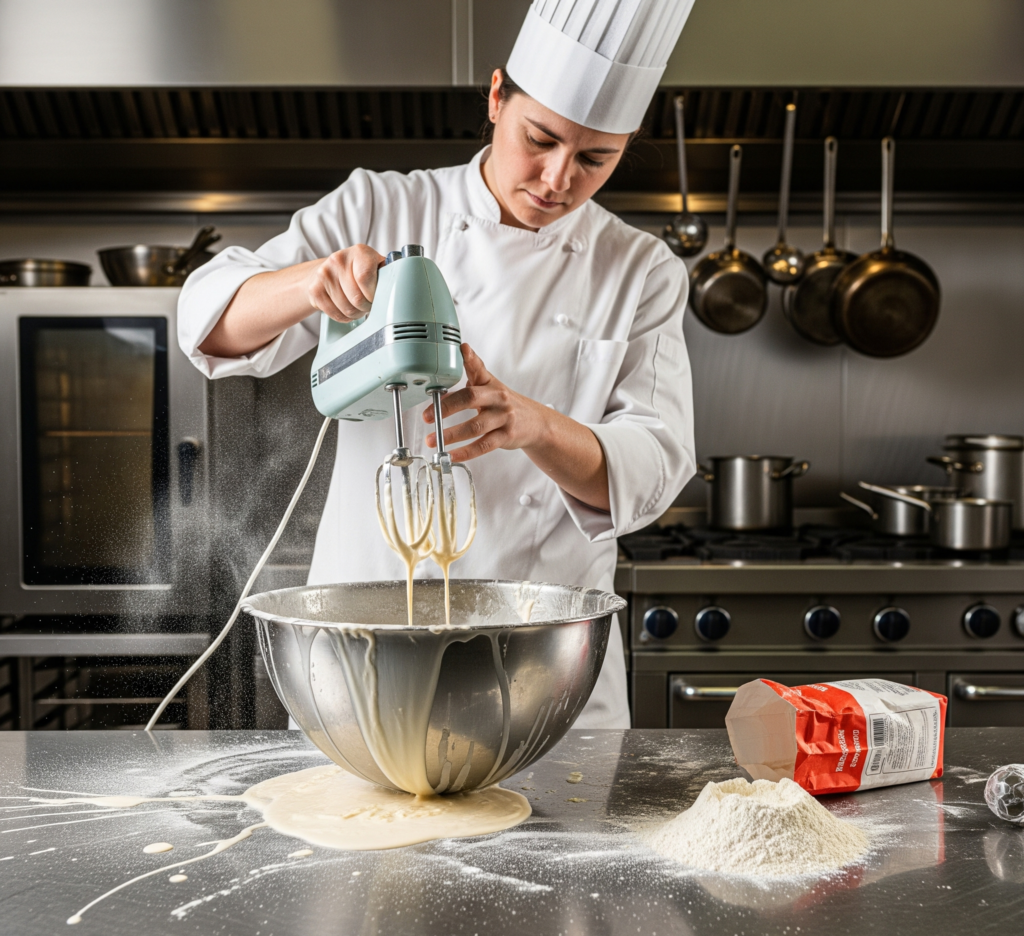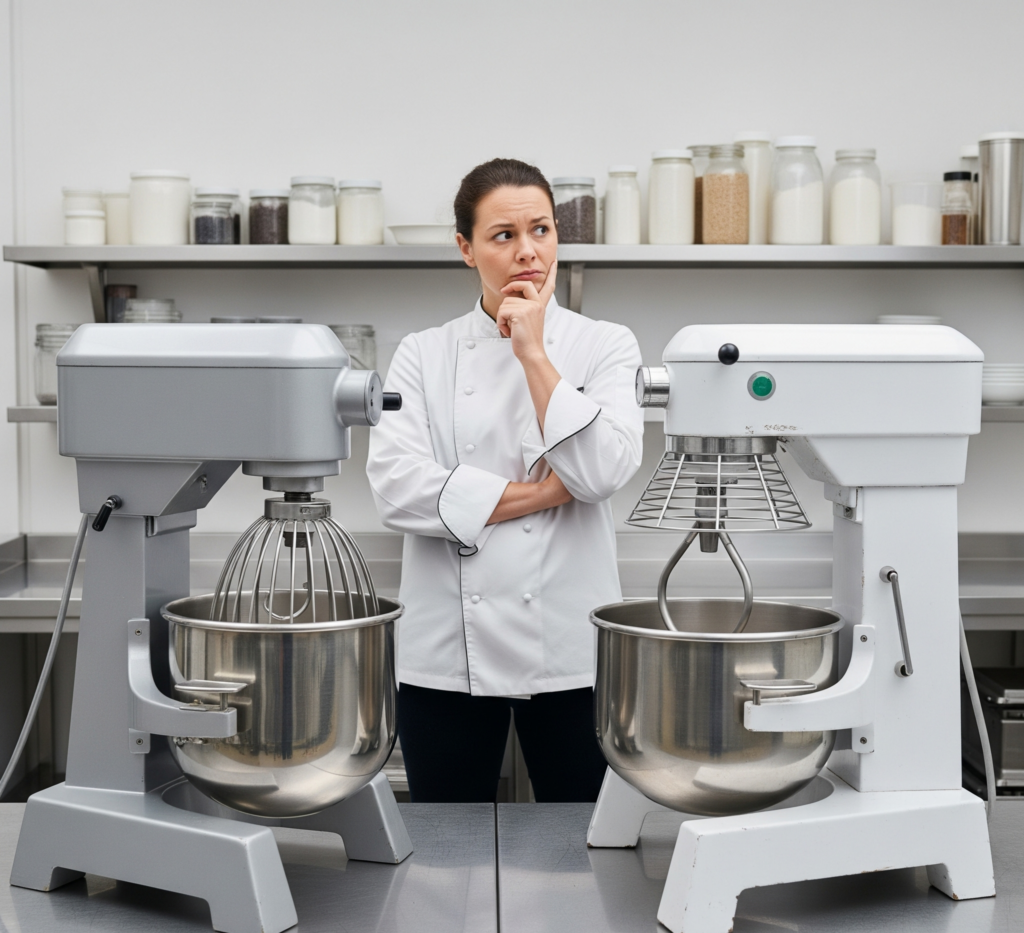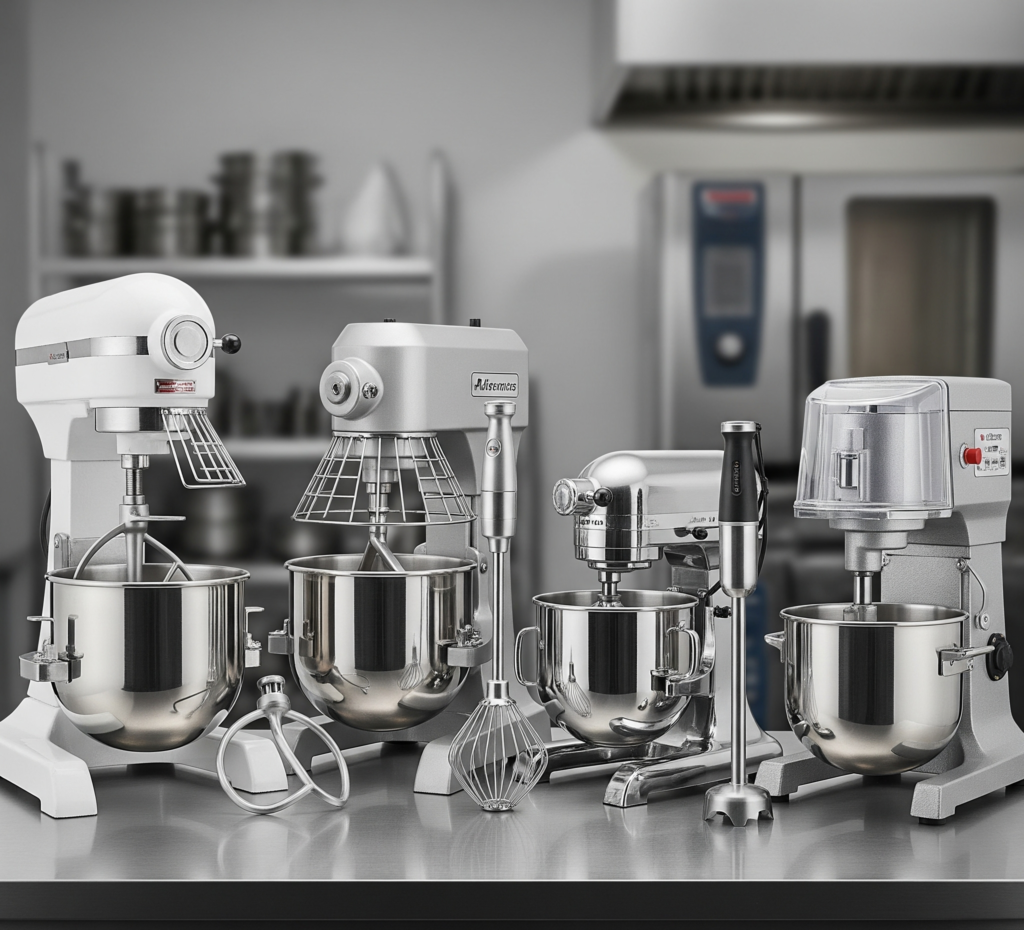Top 3 Mistakes When Choosing a Mixer for a Commercial Kitchen

Equipping a commercial kitchen is all about precision, efficiency, and durability—and one of the most important tools in your line-up is the mixer. Whether you’re running a bakery, a restaurant, or a high-volume catering service, choosing the right mixer can make or break your kitchen workflow.
Unfortunately, many operators make the same critical errors when selecting a commercial mixer. Here are the top 3 mistakes to avoid—and what you should do instead.
1. Underestimating Capacity Needs
The Mistake:
Many kitchens choose a mixer that’s too small, either to save money or because they underestimate their production volume. A 10-quart mixer might seem sufficient during setup, but it can quickly become a bottleneck once the kitchen scales up operations.
Why It’s a Problem:
- Overfilling small mixers leads to overheating, wear, and breakdown.
- It slows down production and increases prep time.
- It forces repeated batches, which wastes time and labour.
What to Do Instead:
- Assess your volume needs accurately based on peak production periods.
- Consider future growth: Will your operation scale up in 6–12 months?
- Always err on the side of slightly larger capacity to avoid early replacement.
Tip: For bakeries or pizzerias with high dough output, a floor model (20 qt or higher) is often more appropriate than a countertop unit.
2. Ignoring the Mixer Type (Planetary vs. Spiral)

The Mistake:
Choosing a planetary mixer when you actually need a spiral mixer—or vice versa. Many buyers assume all mixers perform the same functions.
Why it’s a Problem:
- Planetary mixers are versatile (great for batter, whipped cream, cake mix, etc.) but not ideal for dense dough.
- Spiral mixers are designed specifically for heavy dough (like pizza or bread) and produce better gluten development.
- Using the wrong type can overwork the motor or produce subpar results.
What to Do Instead:
- Understand your primary use case. Ask: What will I mix 80% of the time?
- Choose planetary mixers for general prep (bakeries, restaurants).
- Choose spiral mixers for operations with heavy dough output (pizzerias, artisan bakeries).
3. Focusing Only on Price Over Quality and Features
The Mistake:
Opting for the cheapest option on the market without considering build quality, serviceability, or available attachments.
Why it’s a Problem:
- Low-cost mixers often use cheaper materials (like plastic gears).
- They may lack durability under commercial loads.
- You may face higher long-term costs due to frequent repairs or replacement.
- Some mixers are not NSF-certified, which could lead to health code issues.
What to Do Instead:
- Look for reliable brands with solid warranties and local service options.
- Ensure the mixer is NSF-certified and built for commercial use.
- Consider features like gear-driven motors, safety guards, and interchangeable attachments.
- Balance cost with durability, warranty, and long-term performance.
Remember: In a commercial kitchen, downtime is costly. Investing in quality saves you more over time.
Types of Commercial Mixers (and What They’re Used For)
To make the right choice, you need to know the differences between the three main types of commercial mixers and their ideal uses.

1. Planetary Mixers
- How they work: A single mixing attachment rotates around a fixed bowl (like a planet orbits the sun).
- Best for: General use — cake batters, frosting, mashed potatoes, sauces, whipped cream, cookie dough.
- Available in: Countertop and floor models (5 to 80 quarts).
- Why choose it: Highly versatile and supports multiple attachments (whisk, paddle, dough hook, meat grinder, etc.).
2. Spiral Mixers
- How they work: Both the bowl and spiral hook rotate simultaneously, minimizing heat and ensuring even dough development.
- Best for: High-volume, dense doughs — pizza dough, artisan bread, bagels.
- Available in: Usually floor models (20 quarts and up).
- Why choose it: Designed specifically for heavy dough; excellent for gluten development.
3. Vertical Cutter Mixers (VCMs)
- How they work: High-speed spinning blades in a covered bowl chop, mix, and purée ingredients.
- Best for: Chopping, emulsifying, blending — sauces, doughs, dressings, ground meat, even nut butters.
- Available in: Floor-standing units, typically 15–60 quarts.
- Why choose it: Ideal for bulk prep; faster than traditional mixers but not for fine whipping or delicate batters.
Final Thoughts
Choosing the right commercial mixer isn’t just about size or price—it’s about matching your kitchen’s needs with the right tool for the job. Avoiding these top three mistakes—underestimating capacity, choosing the wrong mixer type, and focusing only on price—can save you money, time, and frustration.
Take the time to assess your kitchen’s workflow, consult with equipment experts, and invest wisely. A well-chosen mixer will be a reliable workhorse in your kitchen for years to come.
